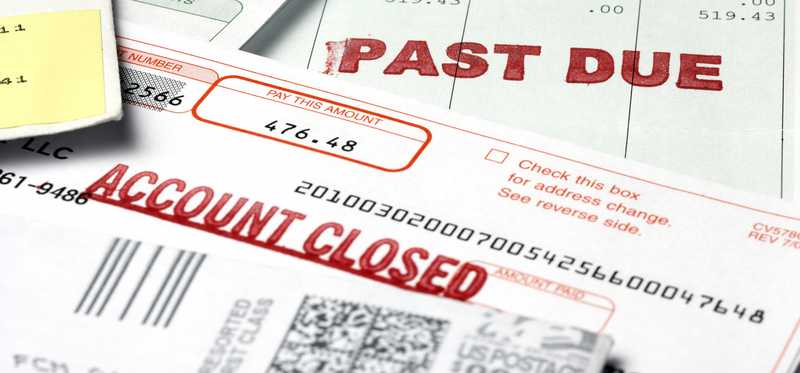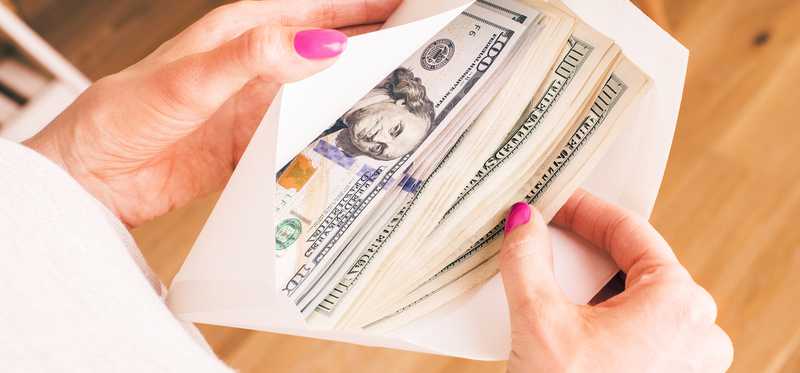Getting a Tax Refund? Use It One of These 13 Ways

Getting a Tax Refund? Use It One of These 13 Ways
Your tax refund is here…
It’s tempting to spend your tax refund on vacations, new tech, and other things on your want list, and there isn’t anything wrong with that. But there are better ways to use that money. Investing it in your future or saving it for a rainy day may not be as fun as buying a new toy, but it offers a much better value over the long run. Here’s a look at 13 smart ways to use your tax refund.
ALSO READ: 4 Reasons Your Tax Refund Could Be Larger Than Last Year's
Previous
Next

Pay down your debt
Debt, particularly high-interest debt, can strain your finances and make it difficult to save for your long-term goals. Your tax refund can help ease that burden.
If you have credit card debt, put your money here first. The high interest rates can send your balance spiraling out of control quickly, so it’s crucial that you pay your cards off as soon as possible. Once this is done, you may want to consider paying off your car loan, if you have one, or making an extra payment toward a student loan or mortgage. Any extra money you contribute today will reduce the amount you pay in interest over the lifetime of the loan.
Previous
Next

Build your emergency fund
Everyone should have an emergency fund that contains enough money to cover three to six months of living expenses. In the event of an unexpected job loss, medical emergency, or insurance claim, you can use this fund to cover these expenses rather than taking on debt.
Use your tax refund to start your emergency fund if you don’t have one already or to beef yours up a little more. First, decide how many months of savings you want the account to hold. Then, total your monthly living expenses and multiply this amount by the number of months to figure out how much you need to set aside.
Previous
Next

Make a contribution to your retirement savings
You won’t see any immediate benefit from contributing your tax refund to a retirement account, but the money you contribute today could be worth many times its original value by the time you’re ready to begin drawing upon those funds. A $1,000 tax refund invested today could be worth over $7,600 in 30 years with a 7% annual rate of return.
Unfortunately, you cannot make one-time contributions to your 401(k), but you can do this with IRAs. You’re allowed to contribute up to $6,000 to an IRA in 2019 or $7,000 if you’re 50 or older. But you should only place your tax refund here if you won’t need to access the funds anytime soon. You cannot withdraw money from your IRA before age 59 1/2 without paying a 10% early withdrawal penalty.
Previous
Next

Invest it
Investing your tax refund in a taxable brokerage account is an alternative to an IRA contribution for those who want to grow their money but don’t want any limitations on when they can access it. You can invest in anything you want and take the money out at any time for any reason.
If you’re new to investing, you may want to start small. Try investing part of your tax refund and using the rest to pay down debt or keep it in a savings account. Then, as you gain more confidence in your ability to invest, you can add money to this account.
Previous
Next

Put it in your health saving account (HSA)
A health savings account (HSA) enables you to set aside pre-tax dollars for healthcare expenses. If you use the money for a qualified medical expense, you won’t pay any taxes on it at all. The catch is, in order to qualify for an HSA, you must have a high-deductible health insurance plan. This is defined as one that has a deductible of at least $1,350 for an individual or $2,700 for a family.
Individuals may contribute up to $3,500 to an HSA in 2019 and families may contribute up to $7,000. You can use this money for non-medical expenses, but it’s best to avoid this if you can because you’ll have to pay income tax on the withdrawn amount, plus a 20% penalty if you’re under 65. Adults 65 and older do not have to pay a penalty, but they still pay income tax if the money is used for non-medical expenses.
Previous
Next

Use it to fund your large purchases
Your long-term financial goals may include buying a home or a new car or taking that vacation that you’ve always dreamed about. These are large expenses that require you to plan and save for several years before you can afford them. Your tax refund may not be enough to cover the full amount, but it can certainly help.
If you plan to use the money within the next few years, you’re better off keeping it in a savings account rather than investing it because it’s easier to access your money when you need it and there’s no risk of losing it.
Previous
Next

Build your professional skill set
One of the most underrated investments you can make is in yourself. By pursuing professional training and growing your knowledge and skills in your field, you can open up new doors for yourself which could lead to increased income down the road.
Consider which skills and certifications are the most valuable in your field and then seek out additional education to help you learn these skills. Use your tax refund to cover the costs of this training and then use what you’ve learned to move up the career ladder.
Previous
Next

Use it as a security deposit on a secured credit card
Secured credit cards are a great way for those with a short or bad credit history to raise their credit scores. They function just like regular credit cards, but you must put down a refundable security deposit that’s often equal to your credit limit in order to open the account.
Use some of your tax refund to cover this deposit and then make small purchases each month and pay the card off in full and on time. Over the course of several months, you will see your credit score rise. Once your score is where you want it to be, you can close the account, if you choose, and the card issuer will refund your security deposit.
Previous
Next

Refinance your mortgage
Refinancing your mortgage can reduce the amount that you pay in interest over the lifetime of the loan. But a new mortgage also comes with new closing costs and it can be difficult to come up with these funds if you don’t have a lot in savings.
Your tax refund can help cover some of these expenses, but before you go through with this, make sure the amount you’ll save by refinancing exceeds what you’ll pay in closing costs. Otherwise refinancing may not be worthwhile.
Previous
Next

Make some upgrades to your home
Your tax refund can help update failing appliances or refresh a dated room, but perhaps one of the best ways to spend money on your home is improving its energy efficiency. Consider installing solar panels on your roof or better insulation to prevent heat from escaping around doors and windows. The upfront cost is high, but most of these upgrades will save you money on your utility bills over the long run.
If you plan to sell your home in the near future, make upgrades that will improve the resale value of your home, like an updated kitchen or landscaping. If you don’t have enough money to do everything you want to do right now, put the refund in savings and wait to spend it until you’ve saved enough.
ALSO READ: 9 Home Upgrades That Are a Good Investment for You and the Planet
Previous
Next

Get life insurance
If you have a family that relies upon your income, your unexpected death could leave them struggling to get by. A life insurance policy ensures that they will be taken care of even after you’re gone. The cost of a policy will depend on your age and health, the type of policy you choose, and how much coverage you want. A term life policy should run most adults a few hundred dollars per year while a whole life policy could be several thousand dollars per year.
Use your tax refund to help cover these expenses or to boost your existing coverage. Depending on the factors mentioned above, you may even have a little money left over after to put toward retirement or a large purchase.
Previous
Next

Put it toward your child’s college fund
If you’re on track for retirement and your other financial goals, consider putting your tax refund in a college fund for your child. This can help reduce their student loans, helping them save more money in the early years of their careers.
You can open a 529 savings plan in your child’s name and contribute after-tax dollars to the account. You and your child will not pay any federal taxes on the account’s earnings at all if the money is used for qualified educational expenses. Each state determines its 529 plan contribution limit, and some states tax the earnings in these accounts, but many do not.
Previous
Next

Donate it
Donating your tax refund is a smart choice if you don’t really need the money for anything else. You’re able to support a charity while at the same time reducing your taxable income for the year. You can write off donations up to 50% of your adjusted gross income -- your income minus tax deductions -- made to qualifying nonprofit organizations. There’s a lower 30% limit for certain organizations, including private foundations, and veterans’ societies.
If you do make a donation, especially if it’s a substantial one, you must maintain physical records of the transaction. You aren’t required to submit these with your taxes, but if the IRS audits you, you will need proof of your donation.
ALSO READ: 5 Things to Know About Charitable Donations and Taxes
Previous
Next

Whatever you do, use it wisely
Depending on your financial situation, some of these suggestions may suit you while others will not. Think about your long-term goals and take stock of your current finances to determine the best way to use your tax return. You may only choose one of the things mentioned above or you may spread your money out across a few. Do what makes sense for your lifestyle.
The Motley Fool has a disclosure policy.
Previous
Next
Invest Smarter with The Motley Fool
Join Over Half a Million Premium Members Receiving…
- New Stock Picks Each Month
- Detailed Analysis of Companies
- Model Portfolios
- Live Streaming During Market Hours
- And Much More
READ MORE
HOW THE MOTLEY FOOL CAN HELP YOU
-
Premium Investing Guidance
Market beating stocks from our award-winning service
-
The Daily Upside Newsletter
Investment news and high-quality insights delivered straight to your inbox
-
Get Started Investing
You can do it. Successful investing in just a few steps
-
Win at Retirement
Secrets and strategies for the post-work life you want.
-
Find a Broker
Find the right brokerage account for you.
-
Listen to our Podcasts
Hear our experts take on stocks, the market, and how to invest.
Premium Investing Services
Invest better with The Motley Fool. Get stock recommendations, portfolio guidance, and more from The Motley Fool's premium services.